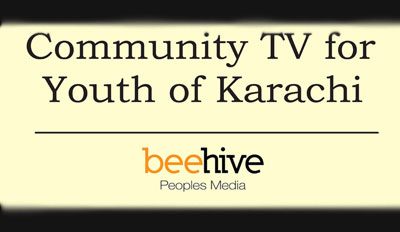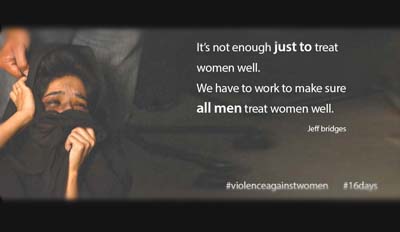Flouting traffic laws with deadly consequences
By Alice Peter
3 April 2016
KARACHI: Eric George, 27, was returning home from work when his motorbike collided with a car. In a hurry to get home to his newlywed bride, Fouzia, he violated some of the basic traffic laws between his workplace and house. He was traveling the wrong way on Korangi Road when the accident took place, the police later informed his mother, Khurshed George.On March 8, 2010, George became one of the 60,000 people to have lost their lives to road accidents in the last 10 years, as per police records. This figure does not include accidents that are not reported.
"My son was hardworking and intelligent. I could not believe it when the police said he was driving recklessly," said his mother.
Earlier this year, Dawn identified traffic accidents as the leading cause of death in Pakistan. Moreover, a World Health Organization published report found that road accidents will become the fifth major cause of deaths globally by 2030.
"Most accidents are a result of human fault", said sub-inspector traffic police, Aurangzeb Khan, stationed at II Chundrigarh Road. His nine-year experience led him to conclude that nonobservance of traffic laws has become a norm in Pakistan. He identified lack of awareness as the root of the problem. Many choose to disobey while others simply have no knowledge of the law, he added.
He went on to list some of the basic road ethics of driving on main roads. The extreme-right of a road is the fast track that is primarily for private cars or VIP movements, whereas the extreme-left is reserved for buses or commercial vehicles that need to make stops.
According to an independent survey, 46 out of 50 bike riders between the ages of 15 and 30 admitted to not wearing a helmet; 20 did not even have a license. Approximately 40 car owners said they did not wear a seatbelt when driving within the city, whilst 48 made it a point to wear it on the highway. It also revealed that 32 respondents were not aware of the tracks designated for their respective vehicles.
There is no dearth of laws regulating traffic. The Pakistan Highway Code Book contains safety laws but people hardly read it, said the traffic police. "Pedestrian bridges remain deserted because people prefer endangering their lives instead of climbing a flight of stairs', noted Dr. Amir Shaikh, DIG traffic police."
However, sub-inspector Khan felt that lawmakers and enforcers are equally responsible for allowing these numbers to increase. One of the most astonishing shortcomings of the law, he says, is the failure to provide a designated track for bike riders. As a result, they cut between tracks and cause traffic jams on a regular basis, he said.
Bike riders, on the other hand, justify zigzagging across Karachi roads. "My job requires me to be at places, deliver parcels, so I use whichever track I find empty,' said Ali Zeeshan, dispatcher at Jang Group."
Sub-inspector Khan pointed out a loophole in the implementation of traffic laws. He believes that government-imposed penalties for violators are often affordable, allowing them to get off easy. Instead of issuing heavier fines for various breaches, to evoke fear of the law amongst people, the government recently reduced the penalties.
Not wearing a helmet when riding a motorbike carried a fine of Rs300 in the past but has since been reduced by half to Rs150. The fine for driving without a valid license was also halved from Rs1000 to Rs500. "Increasing these amounts can be an immediate answer to prevent mishaps', reasoned Khan."
With ever-increasing fatal and non-fatal accidents being reported each year, road accidents have become a massive public health issue; one the state tends to address amid others such as terrorist activities and target killings. In 2013, approximately 935 road accidents were reported in Sindh alone, of which, 582 were fatal and 353 non-fatal.
"Numbers have definitely increased now," said Dr. Javeria Ahsan, Senior Registrar of the Emergency Department at Jinnah Postgraduate Medical Center. "We deal with about 250 road accident cases on a daily basis," she added. She routinely treats victims with blood loss so severe that it becomes difficult to revive them.
For Dr. Ahsan, the absence of a proper rescue system in Pakistan means many victims succumb to their injuries before they ever reach the hospital. "It is imperative for citizens to have basic knowledge of first-aid," she added. Lives can be saved if only bystanders have the knowhow of helping road accident victims.
While prevention of road accidents and compliance with traffic rules is part of a long-term plan, spreading awareness about how to help accident victims in the immediate aftermath is still achievable in the short-term.
There are numerous ways of stabilizing road accident victims until ambulances arrive at the scene:
1. Crowding around a victim who is having trouble breathing can further suffocate him/her. After helping the person to the safe side of a road, people should step away.
2. Nevertheless, this does not apply to someone who has suffered a spinal injury. In that case the wise thing to do is to not move the victim at all. The injured can be helped to lie down in a lateral position so the hip is neutralized.
3. If there is an open wound that is bleeding, it should be immediately compressed with a clean cloth.
4. Last, but not the least, a layman can give chest compressions to someone who has gone into cardiac arrest. By placing one palm on the chest and the other on top of it, compressions can be given. Arms and shoulders should be kept straight.
"Small things such as these can make the difference between life and death," said Abbas Ali, paramedic at Aman Foundation, after stating the aforementioned facts.
In a country that loses a drastic number of its population to terrorism alone, it is important to ensure the safety of the remaining from avoidable tragedies. The latter, however, requires the cooperation of both, public servants and civilians alike.








